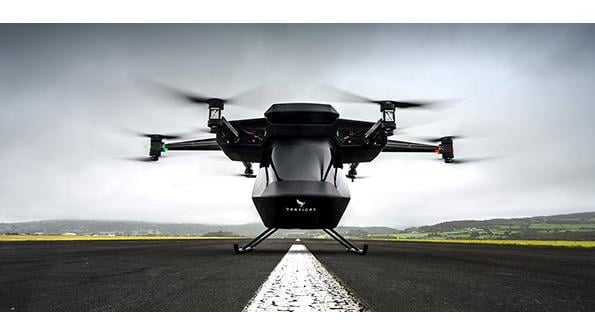Opinion: MRO Is Needed Now For Urban Air Mobility

What was once a dream—the reality of aviation operating at large within our cities—seems closer than ever. To achieve this dream, the global race is on to develop a suitable vehicle platform—one that uses a green fuel source, is efficient and, certainly by aerospace standards, available at scale.
The realization of this vision is not without significant challenges, from certification and logistics to social acceptance. That said, with the coalescing of new technologies, committed investors and fresh approaches by regulatory bodies, estimates of first commercial services start as early as 2023. Don’t go telling your friends just yet, though—the viability and sustainability of this novel urban transportation system rests on the ability to scale up to a point where load factors and utilization can satisfy any prudent financial manager.
But with so much focus on making urban air mobility (UAM) a reality, it seems that MRO and the aftermarket have been forgotten. The solution? Plan now and plan together. An effective aftermarket cannot be an afterthought, and the key to enabling it lies in three main areas.
Design-Enabled Solutions
To maximize utilization in a new era of aviation, we must do more and embrace new technologies as well as new philosophies. The development of embedded sensors, for example, in both the aerospace and adjacent industries such as Formula One, provides greater real-time conditional monitoring beyond what we use today. Coupled with the right data infrastructure, in addition to providing performance and safety benefits, this can significantly decrease the need for inspections. Furthermore, with the application of machine learning and AI, complex trends in maintenance events could be identified, factoring in typical mission profiles or operating environments. A natural conclusion of this is a true digital twin for each operating asset, fed with the data of each component’s specific design, history and current condition. Combined effectively with a high degree of modularity, this could radically change the way we view and schedule MRO operations.
Vehicle platforms designed this way early in their life cycle could reap the rewards of a scalable solution, favored by operators over an early entrant without the longevity to thrive in this highly competitive market.
Digital Tools
The availability of suitably qualified engineers and technicians to perform MRO operations could present a barrier to the high level of utilization required. A leaner, more centralized approach to damage inspection and triage may be the answer—and digital tools are at the heart of this.
The toolbox of the future will certainly be more digital, and the ability to remotely perform and share work will reduce the need for eyes on the apron. Digital maintenance processes are already being used in the aerospace industry, and we must expand this to realize their full potential. The ability to scan a damaged structure, for instance, and for it to be characterized digitally allows for remote or even automated assessment. With the right digital tools at hand, engineers at central locations can do the initial assessments, allowing a focused workforce to be deployed more efficiently on the ground. These assessments also leave digital footprints, providing input into the aforementioned digital twins. Combined with increasingly affordable virtual- and augmented-reality tools, it’s easy to see how remote digital hangars may be a key component of the UAM system and will require new operating models for MRO providers.
MRO Infrastructure
Aircraft hangars, serving numerous MRO operational requirements, are commonplace at airports today. But this embedded infrastructure doesn’t necessarily work in an urban context where real estate is at a premium. There is a clear correlation between cities where UAM could offer maximum benefit and those with the biggest constraints on urban real estate. The limitations on urban space will strongly influence the configuration of a UAM facility and constrain the MRO services available there.
From simple operational pads to stations and hubs, vehicle and infrastructure operators will need to carefully consider the movements between each to ensure the operational efficiency of any MRO event. With space at a premium, having a vehicle at the wrong place at the wrong time is a sure way to threaten the high utilization that underpins the UAM business model. While infrastructure providers scramble to understand constraints set by high-density movements and battery charging, it’s important to consider where vehicles will be maintained and how this will influence the design of both the infrastructure and the vehicle.
The MRO requirements placed on UAM infrastructure providers must be fleshed out through a tightly coupled development process with vehicle OEMs and operators. Like many aspects of UAM, this early collaboration is essential. No matter how sparse initial traffic may be, solutions that cannot be scaled up to create a totally viable system will prevent us from realizing the great benefits that lie ahead.
James Richmond is the urban air mobility lead at Atkins, focused on helping clients unlock the potential of this emerging market




